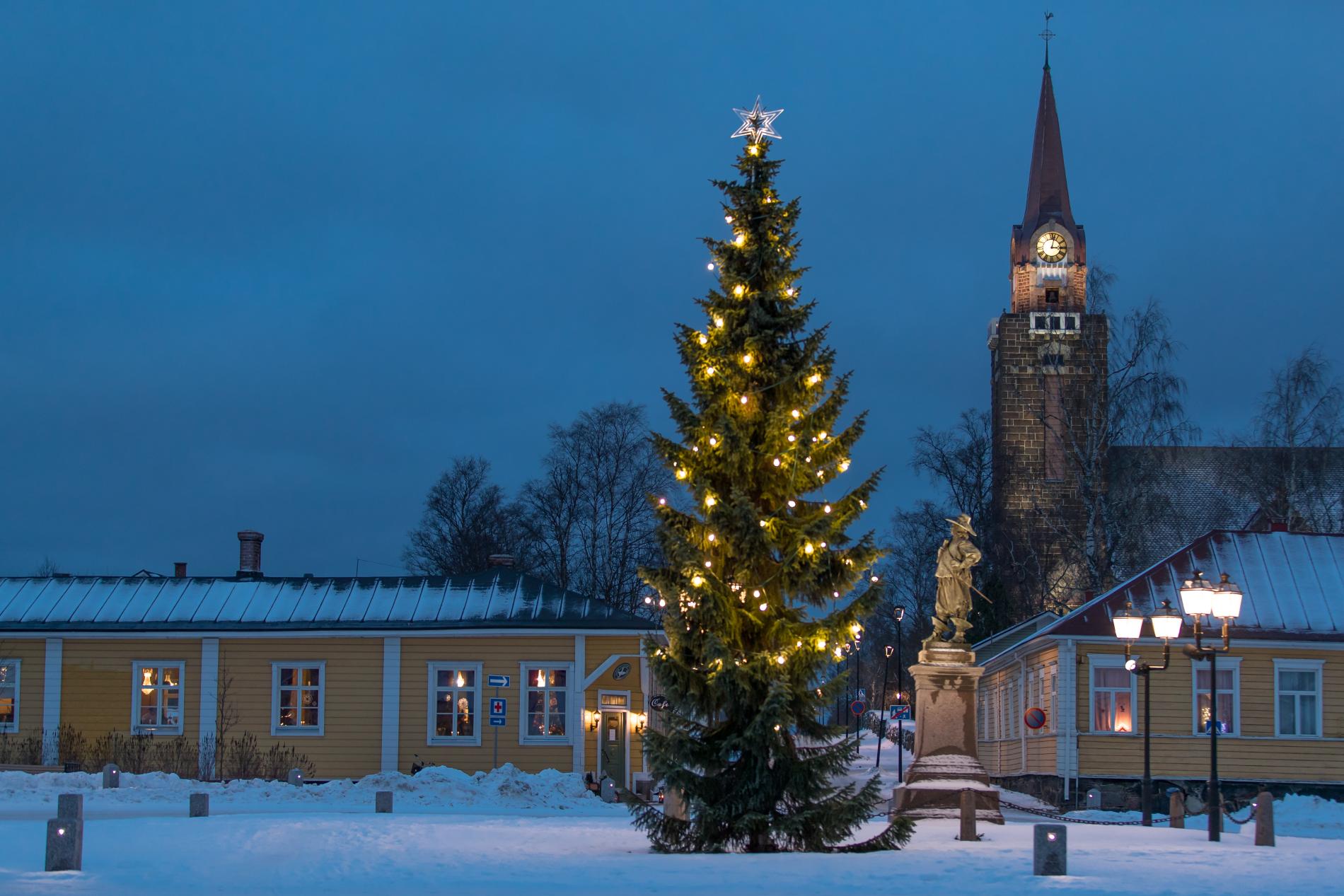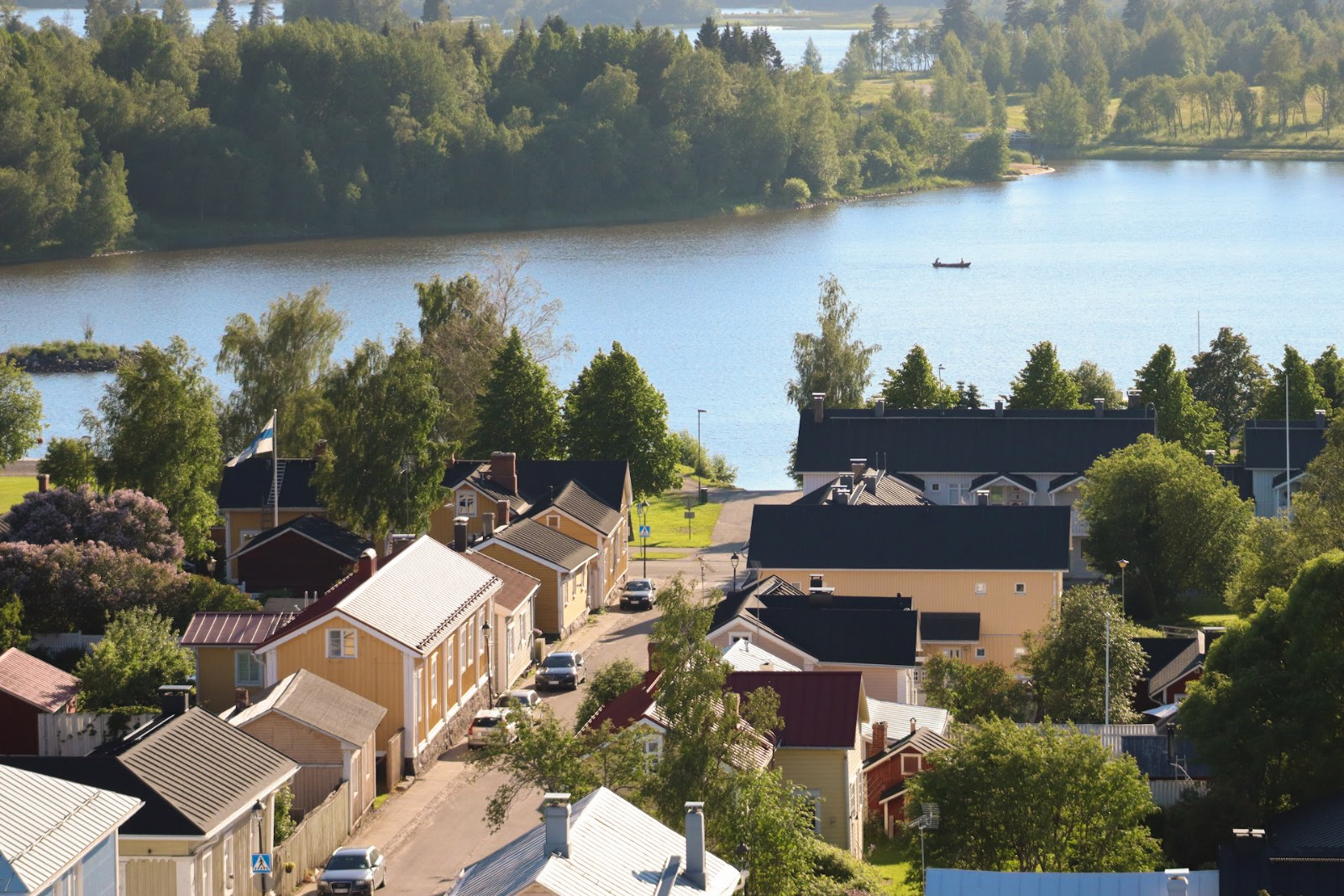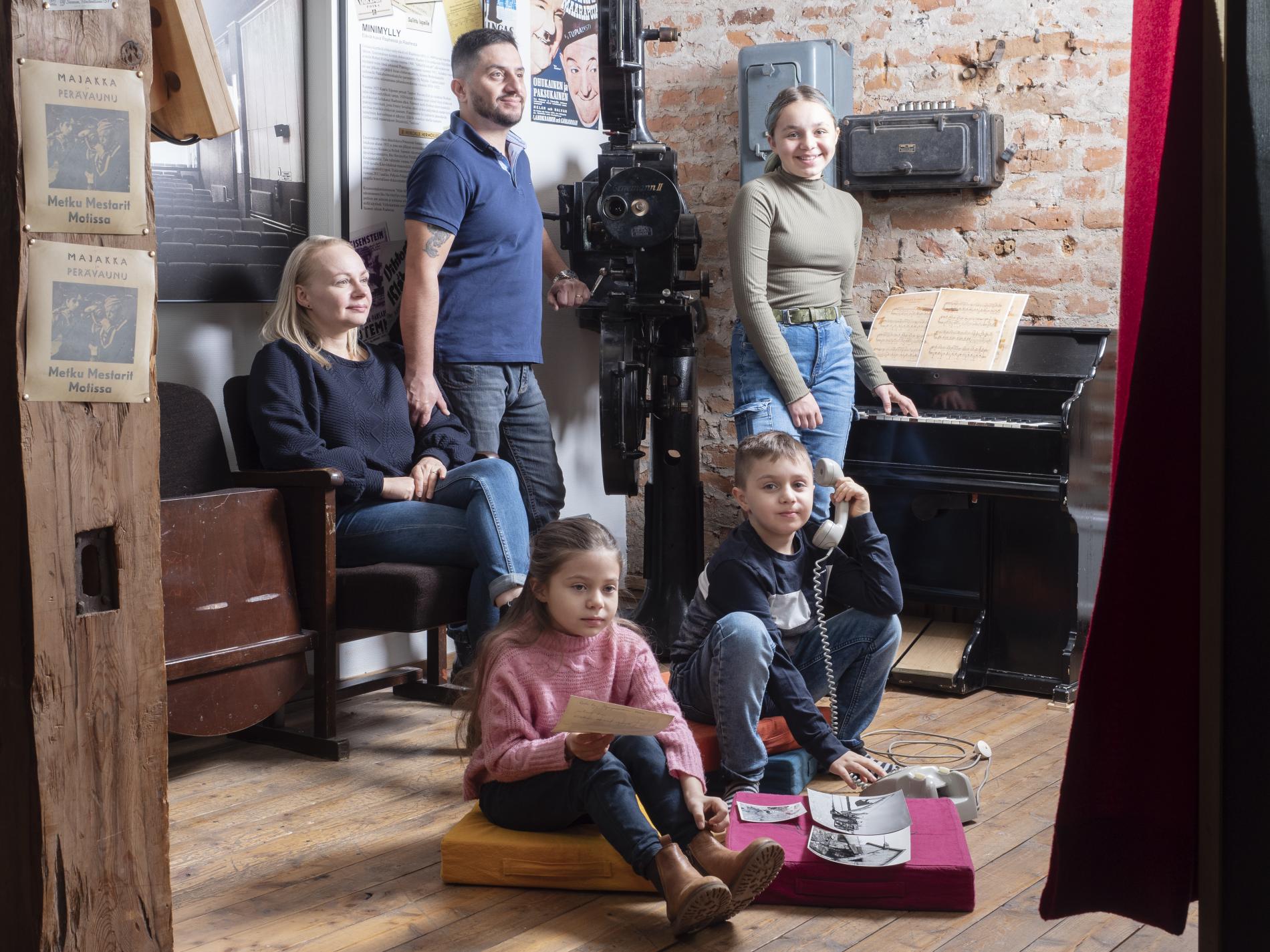Returning migrants dropped out of the rat race and moved to the idyllic seaside town: “There is luxury in life and more time for the family here”
Returning migrants dropped out of the rat race and moved to the idyllic seaside town: “There is luxury in life and more time for the family here”
After 20 years living in the Helsinki Metropolitan Area and Luxembourg, respectively, Annekristiina Tuovinen and Emilia Tervonen have returned to the peace of their home region on the shores of the Bay of Bothnia. Having tasted big city life, why did they choose Raahe again?

The seashore, harbour and archipelago. The canal and Old Town. Annekristiina Tuovinen moved with her family back to her childhood hometown after living in the Helsinki Metropolitan Area for years. When making the decision to move, the family made the choice first and foremost in terms of the smoothness of everyday life, the safety of children and the use of time.
“Our daily life in the Helsinki Metropolitan Area was constant moving from one place to another due to commuting, shopping and taking children to and from the day-care centre and hobbies. The distances were long and the traffic was congested. Here, everything is close by and life is much more relaxed. We can spend more leisurely time with the family,” Tuovinen sums up.
In addition to saving time, the move helped Annekristiina’s family to fulfil their dream of improving their quality of life. They live in Raahe in a nice-sized balcony access block by the canal. There is a pier with the Tuovinens’ boat close to the backyard terrace. The distance to the sea is 50 metres along the canal.
In Raahe, you don’t need to be rich to live comfortably.
On hot summer days, the Tuovinens are free to take the boat to any of the islands off the coast of Raahe. The Lapaluoto harbour is often the first port of call, where they pick up dry-cured whitefish for lunch. After that, they enjoy a carefree summer day on their boat, anchoring near some charming island.
“You don’t need to be rich to live comfortably. In Raahe, it is possible to enjoy life and live in a way that would not have been possible in any way in big cities on the salary of two ordinary workers. We have more time and money at our disposal when everything does not go to housing and transport,” Tuovinen says.
Tuovinen says that the family also considered Oulu as their hometown, but they were not enthusiastic about commuting, although hundreds of commuters travel between Oulu and Raahe every day.
“I prefer to minimise the rush and scheduling on weekdays and work it out the other way around. If necessary, I go to Oulu for big city activities in the evenings,” Tuovinen says with a laugh.
The variety of different options for peaceful living is one of Raahe’s special characteristics. In Raahe, you can live by the sea, along the charming canal, in the idyllic wooden Raahe, in a modern block of flats, in a cosy urban community or in communal villages in the lush countryside. Whichever place you choose, the services are just a few minutes away either on foot, by bicycle or by car.
About fifty islands and islets off the town centre
Raahe is a seaside town of just over 24,000 inhabitants in North Ostrobothnia between Oulu and Kokkola. From Raahe, it is an hour to Oulu and an hour and a half to Kokkola. In addition to driving your own car, you can take a bus in both directions. The Vihanti train station can be reached from Raahe in half an hour. Both south and northbound main line trains stop at Vihanti. Finland’s second-busiest airport in Oulu is a doorway to the world.
One charming special feature of Raahe is the archipelago right in front of the town, consisting of some 50 small islands and islets, the furthest of which, Tasku, is only 5 km from the town centre.
Tasku Island has a lovely, peaceful beach which, in the summer, can be reached either by your own boat, a SUP board, boat transportation or renting a kayak. Winter excursions in the archipelago are possible by skiing, snowshoeing, tour skating or walking. On Tasku Island, there is a wilderness hut maintained by the Raahe Fishermen’s Association, where a hiker can brew coffee and roast sausages while being protected from the sea wind.

Both outdoor and indoor sports opportunities are abundant in Raahe, and hobbies are inexpensive compared to bigger cities. In addition to swimming, the Vesipekka spa-level swimming hall offers water running, a gym and bowling. Raahe also has tennis courts, frisbee golf courses, a golf hall and facilities for martial arts and floorball – even a padel hall is about to be completed. There is also a dance school run by the dancer Sanna Hirvaskari, who was born in Raahe.
Finnish baseball is one of the most popular sports in the Raahe region. Football and ice hockey are also played in Raahe. The best-known ice hockey players from Raahe are Joonas Donskoi and Miikka Salomäki.
The nature of the villages in Raahe creates a wonderful setting for hunting, berry picking, mushroom picking and hiking. The footpaths through the ten villages of Vihanti have been recognised as a route along which the hiker can find history, landscapes and resting places with lean-tos at all times of the year.
A safe growth environment for children with peace and quiet around them
Emilia Tervonen, who originally went to Luxembourg as an au pair at the beginning of the 2000s, made a big decision with her husband as the first child of the three-child family was approaching school age. They packed their things and moved to Raahe, Emilia’s hometown. They left their flat in a big central European city for a detached house in Jokela, Pattijoki.
“After living in a cramped flat, we wanted to have our own peace and the opportunity to do things in the yard, enjoying the smell of the forest and the birds singing without the neighbours behind the hedge,” Tervonen says with a laugh.
The younger children of the family attend a village school in Jokela, where the class sizes are small. The teachers are familiar to them and know both the children and their parents. Communication between the home and the school is straightforward.
The firstborn is in a secondary school in the centre of Pattijoki, only five kilometres away. The children go to school independently by bicycle.
“In Luxembourg, the nearest school would have been 300 metres from home, but you could not send children there on their own. Over there, school begins as early as three years of age with a compulsory play school. School days are hopelessly long, and the amount of homework is absurd. In Finland, school is organised with the child in mind,” Tervonen says.

When living in Luxembourg, the parents in Tervonen’s family worked in the city centre, eight kilometres from home. On a good day, the journey along congested streets took an hour; on bad ones, it took more than two hours in each direction. Many times, they had to call the play school and ask them to keep the children there even after closing time, until the parents could get through the traffic jams.
There are no traffic jams in the Raahe area. It is 10 kilometres from Jokela to the centre of Raahe, but the journey only takes a fraction of the time it took in the big city. The son of the family is a boy scout in Pattijoki, and the daughters take dance lessons in Raahe.
“In addition to opportunities for outdoor recreation, there has been an investment in services for families with children and low-threshold hobby facilities that are nearby and do not cost much so that everyone has the opportunity to have a hobby.”
Raised by the whole village
Although Raahe has changed a lot since the 1980s, one thing has not changed from Tervonen’s own childhood: The families in Jokela’s small and thriving village community still know each other and, according to Tervonen, it brings a very special security to life. There is always a parent looking out for the children. Almost everyone is in the village’s WhatsApp flea market group.
“One mother once said in the flea market group that her child had left their phone at home and that the child should come home to eat. Another mother replied that she had just seen the child in the yard with the others and told the child to go home,” Tervonen says with a gentle smile.
Small-town boutiques offer top-notch service
Emilia Tervonen’s mother has a fast food company with some 20 customer seats in the centre of Pattijoki. When Emilia moved to Finland with her husband, who worked in the restaurant industry, they both got a job at Kebab-Grilli Madonna. Now, after 22 years, the company is facing a change of generation.
“It’s an honour to be in a customer service profession. Raahe has tremendously good service everywhere! The local shoe retailer has regular customers from Oulu. They come here specifically for the service,” Tervonen says.
Domestic tourists are familiar with Raahe. The idyllic Old Raahe and the sea, in particular, provide a framework for entrepreneurs in the Raahe region to operate in the tourism industry. Tervonen’s favourite places in Raahe can be found on the pedestrian street. Small boutiques, restaurants and cafés are the best that she knows.
“Pekkatori has a lovely hotel, restored in an old-world style, with a café, restaurant and small shop. The staff are dressed in the same idyllic 19th century style as the house itself. I often go there for lunch and coffee. You just can’t resist the glass case full of wonderful cakes,” Tervonen says.
The Tervonens have settled to life close to the grandparents and Emilia’s siblings. They barely need anything outside of Raahe.
“Raahe is a good place to live and be. It is big enough to have all the essentials but small enough to retain the village and community spirit."
RAAHE
- A seaside town of 24,000 inhabitants, it is the second largest city in the region, 70 kilometres south of Oulu.
- Plots by the sea, work and opportunities.
- Raahe has potential for entrepreneurship: the idyllic Old Raahe and the sea provide a framework for the tourism industry.
- The Hanhikivi 1 project, located in the Raahe region, will employ more than 20,000 people during construction.
- The town has UAS-level education in various fields and a strong metal and engineering industry.
- Read more about plots for sale and rent.
This article was originally published in Finnish in Ilta-Sanomat on 22 November 2021.
